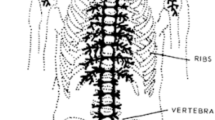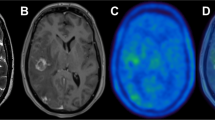Abstract
Background
Respiratory motion can diminish PET image quality and lead to inaccurate lesion quantifications. Data-driven gating (DDG) was recently introduced as an effective respiratory gating technique for PET. In the current study, we investigated the clinical impact of DDG on respiratory movement in 18F-FDG PET/CT.
Method
PET list-mode data were collected for each subject and DDG software was utilized for extracting respiratory waveforms. PET images was reconstructed using Q.clear and Q.clear + DDG, respectively. We evaluated SUVmax, SUVmean, the coefficient of variance (CoV), metabolic tumor volume (MTV), and tumor heterogeneity using the area under the curve of cumulative SUV histogram (AUC-CSH). Metabolic parameter changes were compared between each reconstruction method. The Deep-Expiration Breath Hold (DEBH) protocol was introduced for CT scans to correct spatial misalignment between PET and CT and compared with conventional free breathing. The DEBH and free breathing (FB) protocol comparison was made in a separate matching cohort using propensity core matching rather than the same patient.
Results
Total 147 PET/CT scans with excessive respiratory movements were used to study DDG-mediated correction. After DDG application, SUVmax (P < 0.0001; 8.15 ± 4.77 vs. 9.03 ± 5.02) and SUVmean (P < 0.0001; 4.91 ± 2.44 vs. 5.49 ± 2.68) of lung and upper abdomen lesions increased, while MTV significantly decreased (P < 0.0001; 7.07 ± 15.46 vs. 6.58 ± 15.14). In addition, the percent change of SUVs was greater in lower lung lesions compared to upper lobe lesions. Likewise, the MTV reduction was significantly greater in lower lobe lesions. No significant difference dependent on location was observed in liver lesions. DEBH-mediated CT breathing correction did not make a significant difference in lesion metabolic parameters compared to conventional free breathing.
Conclusions
These results suggest that DDG correction enables more corrected quantification from respiratory movements for lesions located in the lung and upper abdomen. Therefore, we suggest that DDG is worth using as a standard protocol during 18F-FDG PET/CT imaging.






Similar content being viewed by others
References
Beyer T, Antoch G, Blodgett T, Freudenberg LF, Akhurst T, Mueller S. Dual-modality PET/CT imaging: the effect of respiratory motion on combined image quality in clinical oncology. Eur J Nucl Med Mol Imaging. 2003;30:588–96. https://doi.org/10.1007/s00259-002-1097-6.
Liu C, Pierce LA 2nd, Alessio AM, Kinahan PE. The impact of respiratory motion on tumor quantification and delineation in static PET/CT imaging. Phys Med Biol. 2009;54:7345–62. https://doi.org/10.1088/0031-9155/54/24/007.
Torizuka T, Tanizaki Y, Kanno T, Futatsubashi M, Yoshikawa E, Okada H, et al. Single 20-second acquisition of deep-inspiration breath-hold PET/CT: clinical feasibility for lung cancer. J Nucl Med. 2009;50:1579–84. https://doi.org/10.2967/jnumed.109.064246.
Sarikaya I, Yeung HW, Erdi Y, Larson SM. Respiratory artefact causing malpositioning of liver dome lesion in right lower lung. Clin Nucl Med. 2003;28:943–4. https://doi.org/10.1097/01.rlu.0000093095.28642.2b.
Nehmeh SA, Erdi YE, Ling CC, Rosenzweig KE, Schoder H, Larson SM, et al. Effect of respiratory gating on quantifying PET images of lung cancer. J Nucl Med. 2002;43:876–81.
Kawano T, Ohtake E, Inoue T. Deep-inspiration breath-hold PET/CT of lung cancer: maximum standardized uptake value analysis of 108 patients. J Nucl Med. 2008;49:1223–31. https://doi.org/10.2967/jnumed.107.049296.
Nehmeh SA, Erdi YE. Respiratory motion in positron emission tomography/computed tomography: a review. Semin Nucl Med. 2008;38:167–76. https://doi.org/10.1053/j.semnuclmed.2008.01.002.
Werner MK, Parker JA, Kolodny GM, English JR, Palmer MR. Respiratory gating enhances imaging of pulmonary nodules and measurement of tracer uptake in FDG PET/CT. AJR Am J Roentgenol. 2009;193:1640–5. https://doi.org/10.2214/ajr.09.2516.
Kesner AL, Chung JH, Lind KE, Kwak JJ, Lynch D, Burckhardt D, et al. Validation of Software Gating: a practical technology for respiratory motion correction in PET. Radiology. 2016;281:239–48. https://doi.org/10.1148/radiol.2016152105.
Schleyer PJ, O’Doherty MJ, Barrington SF, Marsden PK. Retrospective data-driven respiratory gating for PET/CT. Phys Med Biol. 2009;54:1935–50. https://doi.org/10.1088/0031-9155/54/7/005.
Walker MD, Bradley KM, McGowan DR. Evaluation of principal component analysis-based data-driven respiratory gating for positron emission tomography. Br J Radiol. 2018;91:20170793. https://doi.org/10.1259/bjr.20170793.
Walker MD, Morgan AJ, Bradley KM, McGowan DR. Evaluation of data-driven respiratory gating waveforms for clinical PET imaging. EJNMMI Res. 2019;9:1. https://doi.org/10.1186/s13550-018-0470-9.
Thielemans K, Schleyer P, Marsden PK, Manjeshwar RM, Wollenweber SD, Ganin A. Comparison of different methods for data-driven respiratory gating of PET data. 2013 IEEE Nuclear Science Symposium and Medical Imaging Conference (2013 NSS/MIC); 2013. p. 1–4.
Walker MD, Morgan AJ, Bradley KM, McGowan DR. Data-driven respiratory gating outperforms device-based gating for clinical (18)F-FDG PET/CT. J Nucl Med. 2020;61:1678–83. https://doi.org/10.2967/jnumed.120.242248.
van der Vos CS, Grootjans W, Osborne DR, Meeuwis AP, Hamill JJ, Acuff S, et al. Improving the spatial alignment in PET/CT using amplitude-based respiration-gated PET and respiration-triggered CT. J Nucl Med. 2015;56:1817–22. https://doi.org/10.2967/jnumed.115.163055.
Van Der Gucht A, Serrano B, Hugonnet F, Paulmier B, Garnier N, Faraggi M. Impact of a new respiratory amplitude-based gating technique in evaluation of upper abdominal PET lesions. Eur J Radiol. 2014;83:509–15. https://doi.org/10.1016/j.ejrad.2013.11.010.
Büther F, Ernst I, Hamill J, Eich HT, Schober O, Schäfers M, et al. External radioactive markers for PET data-driven respiratory gating in positron emission tomography. Eur J Nucl Med Mol Imaging. 2013;40:602–14. https://doi.org/10.1007/s00259-012-2313-7.
Osman MM, Cohade C, Nakamoto Y, Wahl RL. Respiratory motion artifacts on PET emission images obtained using CT attenuation correction on PET-CT. Eur J Nucl Med Mol Imaging. 2003;30:603–6. https://doi.org/10.1007/s00259-002-1024-x.
Osman MM, Cohade C, Nakamoto Y, Marshall LT, Leal JP, Wahl RL. Clinically significant inaccurate localization of lesions with PET/CT: frequency in 300 patients. J Nucl Med. 2003;44:240–3.
Nehmeh SA, Erdi YE, Pan T, Yorke E, Mageras GS, Rosenzweig KE, et al. Quantitation of respiratory motion during 4D-PET/CT acquisition. Med Phys. 2004;31:1333–8. https://doi.org/10.1118/1.1739671.
Wolthaus JW, van Herk M, Muller SH, Belderbos JS, Lebesque JV, de Bois JA, et al. Fusion of respiration-correlated PET and CT scans: correlated lung tumour motion in anatomical and functional scans. Phys Med Biol. 2005;50:1569–83. https://doi.org/10.1088/0031-9155/50/7/017.
Gilman MD, Fischman AJ, Krishnasetty V, Halpern EF, Aquino SL. Optimal CT breathing protocol for combined thoracic PET/CT. AJR Am J Roentgenol. 2006;187:1357–60. https://doi.org/10.2214/ajr.05.1427.
Daouk J, Fin L, Bailly P, Meyer ME. Respiratory-gated positron emission tomography and breath-hold computed tomography coupling to reduce the influence of respiratory motion: methodology and feasibility. Acta Radiol. 2009;50:144–55. https://doi.org/10.1080/02841850802627437.
Allen-Auerbach M, Yeom K, Park J, Phelps M, Czernin J. Standard PET/CT of the chest during shallow breathing is inadequate for comprehensive staging of lung cancer. J Nucl Med. 2006;47:298–301.
Yamaguchi T, Ueda O, Hara H, Sakai H, Kida T, Suzuki K, et al. Usefulness of a breath-holding acquisition method in PET/CT for pulmonary lesions. Ann Nucl Med. 2009;23:65–71. https://doi.org/10.1007/s12149-008-0206-4.
Nagamachi S, Wakamatsu H, Kiyohara S, Fujita S, Futami S, Arita H, et al. The reproducibility of deep-inspiration breath-hold (18)F-FDG PET/CT technique in diagnosing various cancers affected by respiratory motion. Ann Nucl Med. 2010;24:171–8. https://doi.org/10.1007/s12149-010-0352-3.
Meirelles GS, Erdi YE, Nehmeh SA, Squire OD, Larson SM, Humm JL, et al. Deep-inspiration breath-hold PET/CT: clinical findings with a new technique for detection and characterization of thoracic lesions. J Nucl Med. 2007;48:712–9. https://doi.org/10.2967/jnumed.106.038034.
Nehmeh SA, Erdi YE, Meirelles GS, Squire O, Larson SM, Humm JL, et al. Deep-inspiration breath-hold PET/CT of the thorax. J Nucl Med. 2007;48:22–6.
van der Vos CS, Grootjans W, Meeuwis AP, Slump CH, Oyen WJ, de Geus-Oei LF, et al. Comparison of a free-breathing CT and an expiratory breath-hold CT with regard to spatial alignment of amplitude-based respiratory-gated PET and CT images. J Nucl Med Technol. 2014;42:269–73. https://doi.org/10.2967/jnmt.114.145748.
Keall PJ, Mageras GS, Balter JM, Emery RS, Forster KM, Jiang SB, et al. The management of respiratory motion in radiation oncology report of AAPM Task Group 76. Med Phys. 2006;33:3874–900. https://doi.org/10.1118/1.2349696.
Funding
This research was supported by Basic Science Research Program through the National Research Foundation of Korea (2018R1D1A1B07049400, Hai-Jeon Yoon; 2018R1D1A1B07045321, Bom Sahn Kim.
Author information
Authors and Affiliations
Corresponding author
Ethics declarations
Conflict of interest
All authors declare that they have no conflicts of interest.
Additional information
Publisher's Note
Springer Nature remains neutral with regard to jurisdictional claims in published maps and institutional affiliations.
Supplementary Information
Below is the link to the electronic supplementary material.
Rights and permissions
About this article
Cite this article
Kang, S.Y., Moon, B.S., Kim, H.O. et al. The impact of data-driven respiratory gating in clinical F-18 FDG PET/CT: comparison of free breathing and deep-expiration breath-hold CT protocol. Ann Nucl Med 35, 328–337 (2021). https://doi.org/10.1007/s12149-020-01574-4
Received:
Accepted:
Published:
Issue Date:
DOI: https://doi.org/10.1007/s12149-020-01574-4




